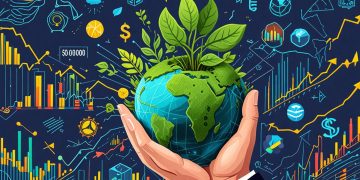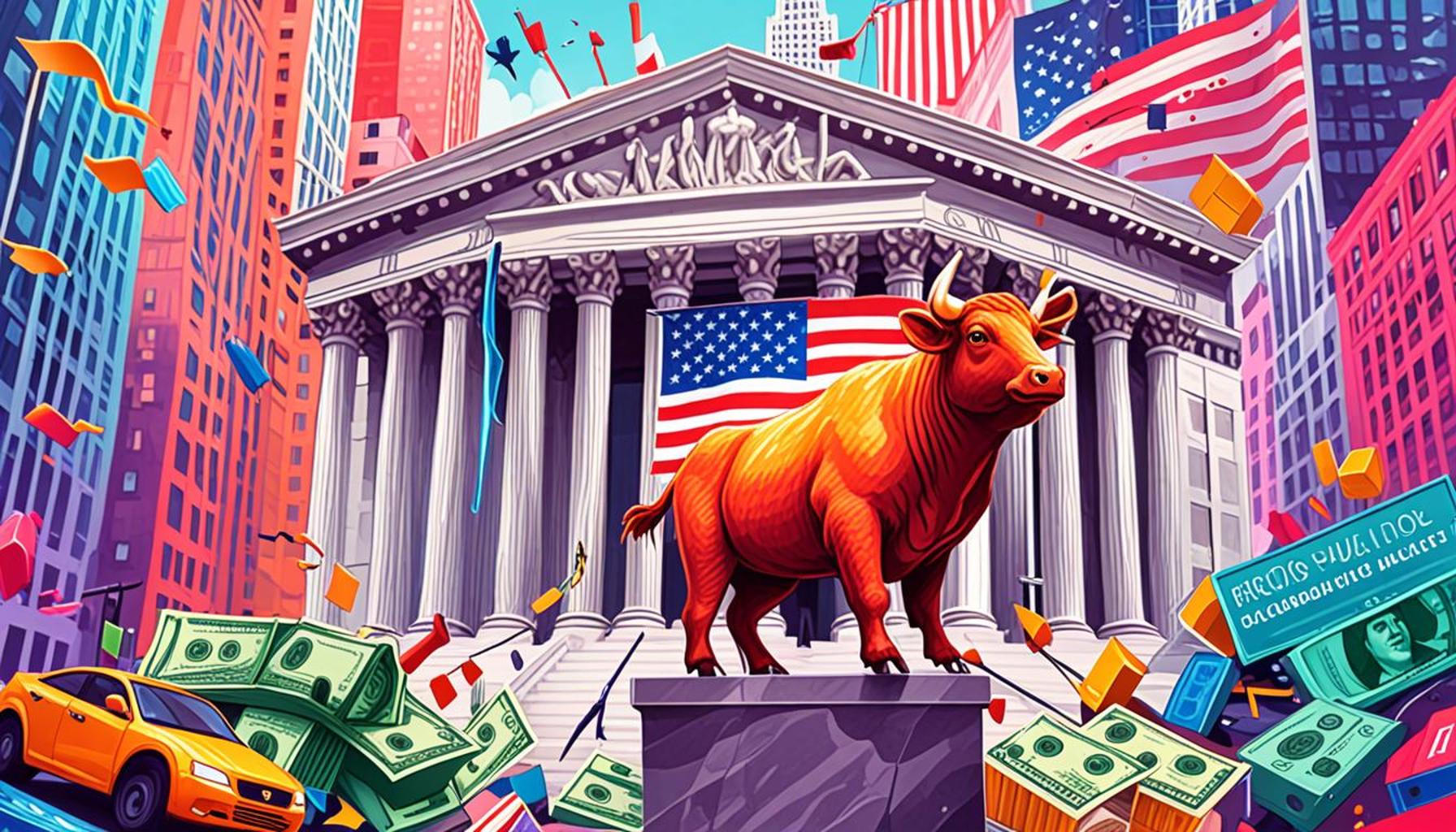Sustainable Investment: The Growing Demand for Green Finance in American Markets

Understanding the Trends in Sustainable Investment
As investors increasingly prioritize aligning their portfolios with personal values, the trend towards sustainable investment is becoming a significant movement within American financial markets. Rather than being a fleeting phase, this represents a profound shift in how individuals and institutions view their financial decisions in relation to ecological and social well-being. The growing sector of green finance is capturing attention, reflecting a paradigm shift from profit merely focused on economic gain to a more holistic vision that incorporates environmental sustainability.
Drivers of Change in Sustainable Investing
A variety of factors are catalyzing this shift towards sustainable investing, reshaping the financial landscape in profound ways. One major driver is:
- Environmental Concerns: The threats of climate change and ecological degradation are no longer abstract concepts; they are pressing realities that influence investor behavior. For instance, the increasing frequency of natural disasters, attributed to climate change, has prompted many to reconsider the long-term viability of their investments in fossil fuels and other environmentally harmful sectors.
- Corporate Responsibility: With consumers increasingly holding companies accountable for their environmental practices, businesses are now integrating sustainable practices into their operational models. Recent studies show that companies with strong environmental, social, and governance (ESG) practices tend to outperform their less responsible counterparts, leading investors to gravitate towards those that prioritize sustainability.
- Regulatory Changes: The introduction of new policies and incentives aimed at encouraging sustainable practices is further reshaping the investment landscape. For example, many states are offering tax breaks for investments in renewable energy, electric vehicles, and energy-efficient technologies, providing a financial incentive for investors to heed sustainability.
The Growth of Sustainable Investment
The momentum is evident in the numbers, with a staggering $17 trillion currently managed under sustainable investment strategies in the United States. This figure marks a remarkable growth of nearly 42% over the last two years. The increasing involvement of younger generations, who often prioritize sustainability over other factors, is a driving force behind this growth. According to surveys, millennials and Gen Z investors are more likely to invest in companies with strong ESG credentials, demonstrating a shift in priorities that will shape the future of the investment market.
This evolution is not just beneficial for the planet; it also presents significant opportunities for investors. Sustainable investing can lead to enhanced financial performance through the identification of companies poised for growth in a low-carbon economy. By actively participating in this burgeoning market, both seasoned investors and those new to investing can discover lucrative opportunities while contributing to a more sustainable future. The integration of core values into investment decisions allows for a dual focus on profit and purpose, demonstrating that sustainable finance can indeed lead to a more vibrant economy.
In conclusion, as the demand for green finance continues to gain traction, understanding this intricate relationship between finance and sustainability is vital. Stakeholders on all levels are encouraged to explore this dynamic arena, unlocking innovative financial pathways while playing an active role in fostering a more sustainable world.
Shifting Paradigms in Investment Strategy
The shift towards sustainable investment is not just a trend; it encapsulates a broader transformation in the way investors assess risk and opportunity. Traditional investment strategies, often narrowly focused on financial returns, are increasingly being scrutinized through the lens of environmental impact and social responsibility. This fundamental change is driving innovative investment strategies that align with long-term ecological sustainability. Investors are beginning to realize that sustainable practices not only contribute to a healthier planet but may also safeguard their portfolios against risks associated with climate change and resource depletion.
The Rise of Impact Investing
Impact investing, a subset of sustainable investing, is gaining traction as a strategy that not only seeks financial returns but also aims to generate measurable social and environmental benefits. This emerging approach appeals to a growing segment of investors, particularly those who wish to see tangible outcomes from their investment choices. Various sectors are experiencing a boom as a result of impact investing:
- Renewable Energy: Investments in solar, wind, and other renewable energy sources have surged, as states and municipalities work towards ambitious clean energy goals. For example, California’s commitment to 100% clean energy by 2045 prompts investors to allocate capital towards innovative energy solutions.
- Sustainable Agriculture: With growing concerns about food security and agricultural practices, investments in sustainable farming practices are gaining momentum. Ventures focused on organic farming, vertical farming, and regenerative agriculture resonate strongly with investors who prioritize ethical sourcing and long-term sustainability.
- Green Real Estate: The real estate sector is evolving, with green buildings now becoming the norm rather than the exception. Properties that adhere to LEED (Leadership in Energy and Environmental Design) standards are increasingly sought after, reflecting a broader preference for energy-efficient structures that lower operating costs and environmental footprints.
Statistics reveal a compelling narrative about the impact of sustainable investing; more than 70% of millennials expressed interest in investment options that address environmental issues. This demographic shift is impacting how companies structure their operations as they work to attract future investors. Furthermore, traditional financial institutions, such as banks and asset management firms, are beginning to recognize the urgent need to adapt their services to meet the demand for green finance. Major asset managers like BlackRock have publicly committed to integrating ESG factors into their investment decisions, signaling that sustainability is no longer a niche focus but a mainstream investment strategy.
In short, the demand for sustainable investment solutions is not merely a fad; it represents a seismic shift in investor consciousness. As both institutional and individual investors progressively embrace sustainable principles, the financial markets are adapting to create new opportunities that align ethical considerations with economic returns. The implications for the future are profound, opening doors to innovative ventures and contributing to a transitional economy that respects the planet and its inhabitants.
The Role of Policy and Consumer Behavior in Green Finance
As the landscape of sustainable investment evolves, the influence of both governmental policy and consumer behavior cannot be overlooked. Policymakers are creating frameworks that encourage financial markets to pursue greener initiatives, while consumers increasingly demand transparency and responsibility from the brands they support. This symbiotic relationship has amplified the push for green finance in American markets.
Government Initiatives and Regulatory Frameworks
Government policies play a critical role in shaping the direction of investment flows towards sustainable sectors. Recently, the Biden administration has emphasized the goal of achieving net-zero greenhouse gas emissions by 2050, which has propelled initiatives like the Green New Deal and significant investments in green infrastructure. By providing tax incentives and funding for renewable energy projects, the government is effectively steering private capital towards sustainability-focused ventures.
Moreover, regulatory entities such as the Securities and Exchange Commission (SEC) have begun pressing for greater disclosure of environmental impact risks from publicly traded companies. This increased scrutiny leads corporations to prioritize sustainable practices, as transparency becomes a competitive advantage. Investors can better assess potential risks and returns based on a company’s commitment to sustainability, thus further integrating environmental criteria into their decision-making processes.
Consumer Preferences and Demand for Corporate Responsibility
The shift towards sustainable investment is also propelled by evolving consumer preferences. Research indicates that over 85% of millennials and Gen Z consumers prefer to support companies that commit to corporate social responsibility. This consumer behavior forces businesses to prioritize sustainability in their operations and investment strategies if they wish to attract this conscientious demographic. For example, brands such as Patagonia and Ben & Jerry’s have successfully leveraged their environmental missions to build loyalty among consumers who value ethical practices.
Furthermore, during the COVID-19 pandemic, many consumers grew increasingly aware of the interconnectedness of public health, environmental sustainability, and economic resilience. The pandemic highlighted the vulnerabilities in many supply chains and stimulated interest in local sustainable products and practices. As a result, community-focused investments have surged, contributing to the rise of social enterprises that prioritize positive impact alongside profitability.
The Financial Sector’s Adaptation to New Realities
In response to these dynamic pressures, financial institutions are evolving to accommodate the growing demand for green finance. Investment funds that integrate Environmental, Social, and Governance (ESG) criteria into their portfolios are experiencing considerable inflows. According to the Global Sustainable Investment Alliance, sustainable investment assets in the U.S. reached approximately $17 trillion in 2020—a remarkable increase from $12 trillion in 2018.
As major investment firms contribute to sustainable initiatives, they not only seek competitive returns but also recognize the long-term benefits of aligning their philosophies with broader societal values. For instance, Goldman Sachs launched a $750 billion sustainable finance goals initiative, committing to support businesses and projects that contribute to a lower carbon footprint. Such commitments reflect a strategic pivot towards sustainability that positions firms favorably in a rapidly changing market landscape.
The interplay of policy reform, shifting consumer expectations, and financial adaptation underscores a comprehensive approach to sustainable investment, illustrating how deeply these elements are interlinked in shaping America’s green finance landscape. As stakeholders across sectors align their goals towards sustainability, the momentum for sustainable investing will likely accelerate, creating a promising interplay between fiscal responsibility and ecological integrity.
Conclusion
In conclusion, the surge in demand for sustainable investment in American markets reflects a significant evolution in both financial practices and societal values. With the growing influence of government initiatives and a heightened emphasis on corporate responsibility, the framework for green finance is becoming robust and multifaceted. Investment firms now recognize that integrating Environmental, Social, and Governance (ESG) criteria is not merely an option but a necessity to remain competitive in a market increasingly conscious of climate change and social issues.
The confluence of regulatory pressure and consumer demand presents a unique opportunity for investors to align their portfolios with a vision that transcends traditional profit motives. As more people prioritize sustainability, companies that fail to adapt risk losing market share to those that actively embrace environmentally friendly practices. Moreover, the astronomical growth of sustainable investment assets, which have skyrocketed from $12 trillion to $17 trillion in just two years, underscores the financial viability of green initiatives.
As America gears up for an era focused on net-zero emissions and environmental resilience, key stakeholders—from policymakers to consumers—must remain engaged and informed. The burgeoning green finance landscape not only represents a response to immediate global challenges but also an invitation for innovative solutions that marry profitability with purpose. The future of sustainable investment is bright, and those willing to learn and adapt will be at the forefront of this transformative movement. It’s time for all of us to explore how we can contribute to and benefit from a more sustainable financial ecosystem.









